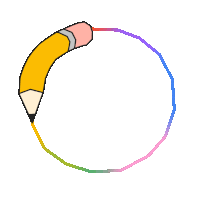
Apr 30, 2019
Last Day of The Heisei Period
This Doodle’s Key Themes
Today’s Doodle honors the end of an era in Japan—literally—as the sun sets on the Heisei period, whose name translates to “achieving peace.” The nation’s 247th gengō, or era name, began with the ascension of Emperor Akihito in January 8, 1989, and comes to an end as the emperor steps down to make way for his eldest son, Crown Prince Naruhito.
The tradition of naming eras dates back to 645 A.D. when Japan’s Emperor Kōtoku took the throne, ushering in a series of reforms to bring about a fair system of government. To emphasize what he hoped would be a fresh start for Japan he adapted the Chinese practice of giving his era a name. Emperor Kōtoku chose Taika meaning “great change.”
Historically, era names have often been inspired by classical Confucian texts and debated by high-ranking officials of the imperial court in a time-honored process of deliberation known as nanchin. Specifically, the gengō aims to express a vision for the future and speaks to the hopes and dreams of the Japanese people.
Where this Doodle appeared
Discover more Doodles by color
Did you know?
The very first Doodle launched as an “out of office” message of sorts when company founders Larry and Sergey went on vacation.
Learn MoreDid you know?
The first Doodle launched in 1998, before Google was officially incorporated.
Learn MoreDid you know?
The first same day Doodle was created in 2009 when water was discovered on the moon.
Learn MoreDid you know?
Doodle for Google student contest winners have gone on to become professional artists
Learn MoreDid you know?
The time it takes from sketch to launch for a Doodle varies widely: some have taken years and others just a few hours!
Learn MoreDid you know?
Hundreds of Doodles launch around the world every year. Often, several different ones are live in different places at the same time!
Learn MoreDid you know?
Our most frequently recurring Doodle character is Momo the Cat - named after a real-life team pet!
Learn More